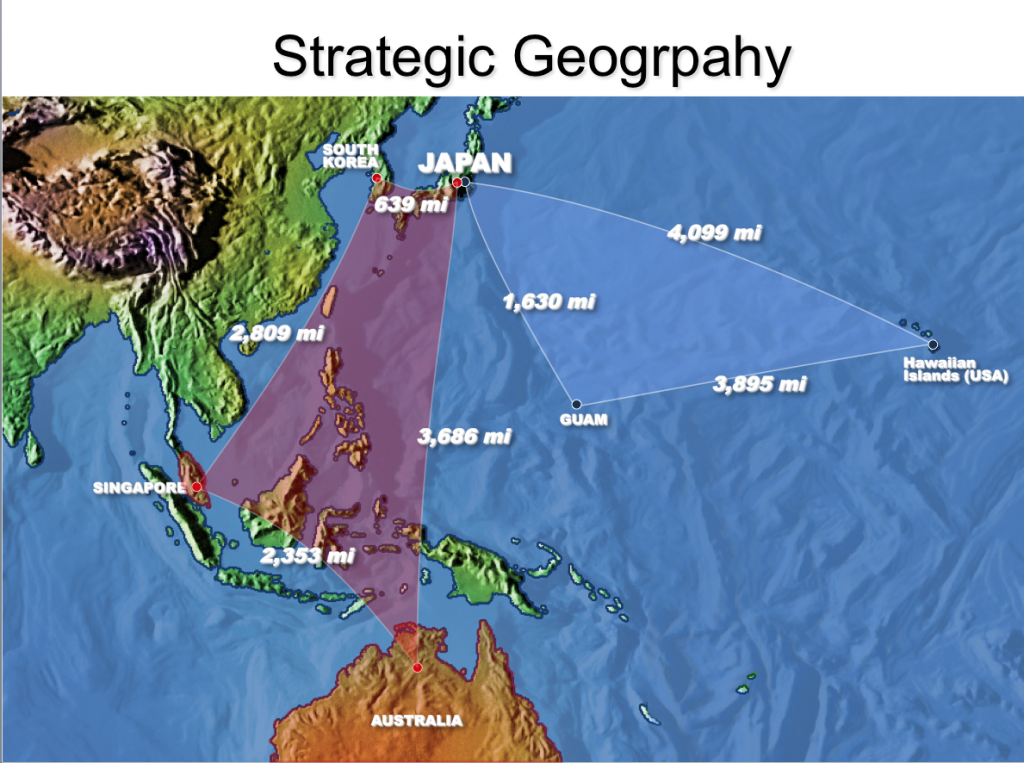2016-10-30 With the evolution of defense capabilities in Australia, Japan and the United States, notably with the arrival of fifth generation aircraft in all three nations, there is a need to expand the capabilities to exercise together and to share data.
The challenge was well articulated by Rear Admiral Stuart Mayer in an interview earlier this year:
“There is no point designing a combat system capable of defeating supersonic threats and throttling it with a slow network or cumbersome C2 decision architecture.
“Achieving an effective network topology is so much more complex in a coalition context in which the potential for divergence is higher.
“The paradox is that a coalition network is much more likely a requirement than a national network, and yet what investment we do make is based on national systems first.
“If we don’t achieve the open architecture design that enables the synergy of a networked coalition force, then the effectiveness of the coalition itself will be put at risk.

“The moment we insert excess command and hierarchical decision authority into the loop we will slow down the lethality of the platforms in the network.
“Before we even get in the battlespace we have to agree the decision rights and pre set these decisions into the combat system and network design; the fight for a lethal effect starts at the policy level before we even engage in combat operations.
“The network and C2 rather than the platforms can become the critical vulnerability.”
“This is why the decision making process needs to be designed as much as the network or the platforms.
“If the C2 matrix slows the network, it will dumb down the platform and the capability of the system to deliver a full effect.”
“The nature of the force we are shaping is analogous to a biological system in which the elements flourish based on their natural relationship within the environment.
“We have an opportunity to shape both the platforms and the network, but we will only achieve the flourishing eco system we seek if each harmonise with the other, and the overall effectiveness is considered on the health of the ecosystem overall.
“For example, an ASW network will leverage the potential of the individual constituent platforms and that in turn will determine the lethality of the system.
“A discordant network connection will, at least, limit the overall Force level effect of the network and at worst break the network down to discordant elements.”
Clearly, a key part of the evolution is about shaping a weapons revolution whereby weapons can operate throughout the battlespace hosted by platforms that are empowered by networks tailored to the battlespace.
And that revolution will have its proper impact only if the network and C2 dynamics discussed by Rear Admiral Mayer unfold in the national and coalition forces.
“The limiting factor now is not our platforms; it’s the networks and C2 that hold the potential of those platforms down.
“When the individual platforms actually go into a fight they’re part of an interdependent system, the thing that will dumb down the system will be a network that is not tailored to leverage the potential of the elements, or a network that holds decision authority at a level that is a constraint on timely decision making.
“The network will determine the lethality of our combined system.”
At the heart of such a change is enhanced information sharing.
Recently, the Australian Ministry of Defence announced that the US, Australia and Japan have made progress in this regard.
In an MoD media release dated August 28, 2016:
Today, representatives of the Australian Department of Defence, Japan Ministry of Defense and the U.S. Department of Defense signed a Trilateral Information Sharing Arrangement (TISA) to further strengthen defence cooperation.
Officials of defence authorities of the three countries met in Honolulu, Hawaii together with representatives of diplomatic authorities, for the eighth trilateral Security and Defence Cooperation Forum where the TISA was signed.
The TISA will further enhance the strategic trilateral relationship and support peace and stability in the Asia Pacific by expediting information sharing to enable higher capability defence exercises and operations among the three nations, taking into account situational awareness in the region.
At the trilateral dialogue, officials pledged to enhance trilateral defence cooperation on maritime security and humanitarian assistance and disaster relief and continue to conduct high capability military exercises. The officials reaffirmed their strategic goals and commitment for trilateral cooperation to further peace and security in the Asia Pacific.

